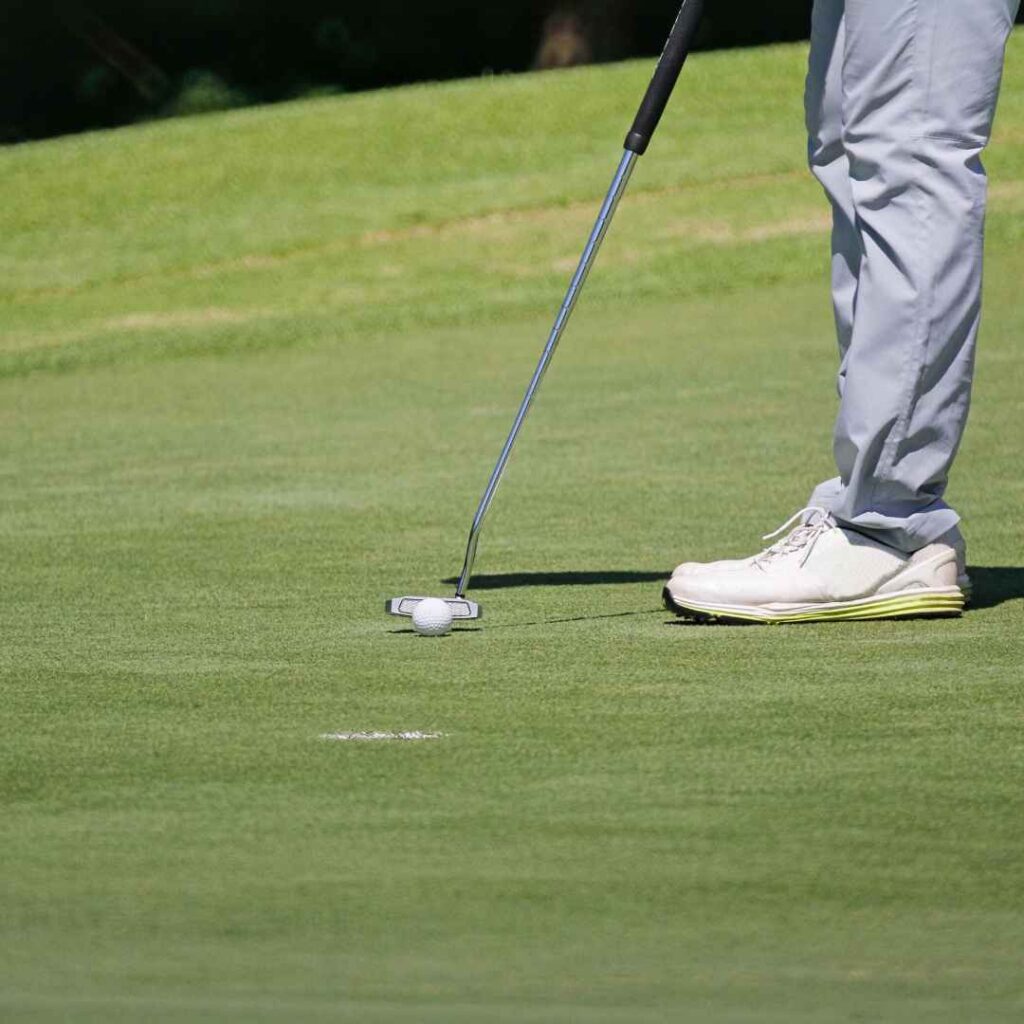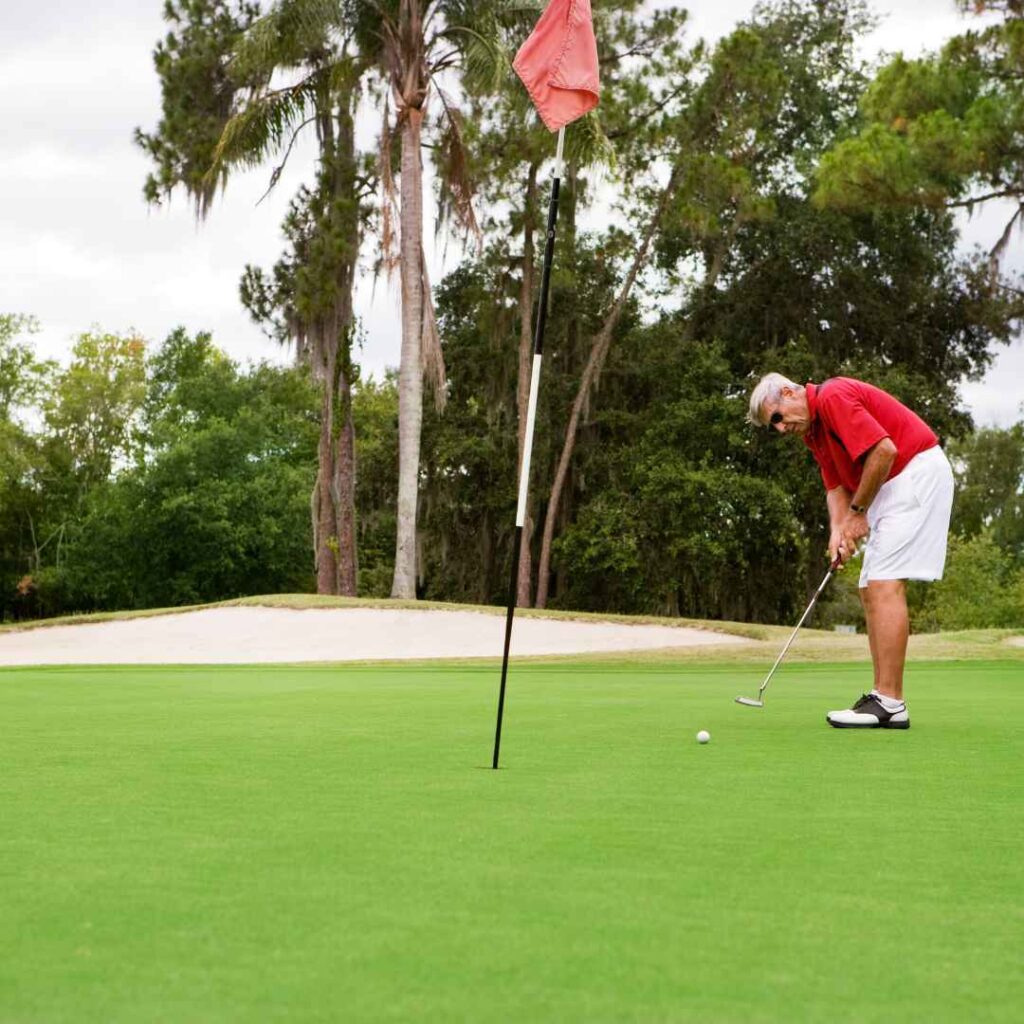
Mastering the Green
As we age, our golf game inevitably changes. While we may lose some distance off the tee, one area where seniors can excel and even improve is on the putting green. Putting is often called the great equalizer in golf, and for good reason. A solid putting game can compensate for other areas where age might have taken its toll. In this comprehensive guide, we’ll explore various techniques, strategies, and practice methods to help senior golfers become better putters and lower their scores.
Understanding the Importance of Putting
Before diving into specific techniques, it’s crucial to appreciate the significance of putting in your overall golf game. Statistics show that putting accounts for around 40% of strokes in an average round of golf. For seniors, this percentage can be even higher. Improving your putting can have a dramatic effect on your scorecard and overall enjoyment of the game.
“I’m about five inches from being an outstanding golfer. That’s the distance my left ear is from my right.”
Ben Crenshaw
The Mental Game of Putting
- Confidence and Positive Thinking
One of the most critical aspects of putting is confidence. Approach each putt with the belief that you can make it. Visualize the ball rolling into the hole before you even take your stance. Positive thinking can significantly impact your performance on the green. - Stay Present
Focus on the putt at hand, not the one you missed on the last hole or the challenging par-3 coming up. Being present in the moment allows you to give each putt your full attention and increases your chances of success. - Embrace Routine
Develop a consistent pre-putt routine. This could include reading the green from multiple angles, taking practice strokes, and using a particular method to align your ball. A routine helps calm nerves and promotes consistency.
Physical Fundamentals of Putting
- Grip
Experiment with different grip styles to find what feels most comfortable and stable. Popular options include the reverse overlap, cross-handed (left hand low for right-handed golfers), and claw grips. The key is to find a grip that allows for a pendulum-like motion and minimizes wrist action. - Stance and Posture
Stand with your feet about shoulder-width apart, with your weight evenly distributed. Your eyes should be directly over the ball or slightly inside the line. Maintain a slight flex in your knees to promote stability. - Alignment
Use the line on your golf ball or draw a line on your ball to help with alignment. Aim this line at your target. Many senior golfers find success using longer putters or arm-lock putters to improve their alignment and reduce unwanted movement. - Stroke
Focus on creating a pendulum motion with your shoulders, keeping your wrists firm. The backswing and forward swing should be of equal length and pace for optimal control.

Reading Greens and Distance Control
- Green Reading Techniques
Practice reading greens from multiple angles. Look for subtle slopes and grain direction. Many seniors find success in using AimPoint or plumb bob techniques to gauge break. - Speed Control
Distance control is crucial in putting. Practice lag putting to develop a feel for different distances. Remember, a putt that dies at the hole has a better chance of going in than one that races past. - The 80/20 Rule
When faced with breaking putts, focus on getting the speed right first. Aim for the high side of the hole, as about 80% of missed putts are due to improper speed rather than misreading the break.
Practice Drills for Senior Golfers
- The Clock Drill
Place 12 balls in a circle around the hole, each about 3-4 feet away. Putt from each “hour” on the clock, keeping track of how many you make. This drill improves your ability to putt from various angles. - Ladder Drill
Place five balls at increasing distances from the hole (3, 6, 9, 12, and 15 feet). Putt from each distance, focusing on getting each putt to stop near or in the hole. This improves distance control. - Gate Drill
Set up two tees slightly wider than your putter head about 6 inches in front of your ball. Practice putting through this “gate” to improve your accuracy and ensure you’re starting the ball on your intended line. - One-Handed Putting
Practice putting with just your dominant hand. This drill helps develop feel and can identify any issues with your stroke.
“The more I practice, the luckier I get.”
Gary Player
Equipment Considerations for Senior Putters
- Putter Length and Style
Consider using a longer putter or even a belly or broomstick putter if allowed by local rules. These can help stabilize your stroke and reduce the impact of shaky hands. - Grip Size
Many seniors benefit from using larger grips on their putters. This can reduce hand action and promote a smoother, more pendulum-like stroke. - Ball Selection
Choose a ball that feels soft off the putter face. Many seniors prefer a softer ball for better feel and control on the greens. - Visual Aids
Consider using a putter with alignment aids or adding your own alignment line. These can greatly assist with aiming and squaring the putter face at impact.

Physical Preparation for Putting
- Flexibility Exercises
Maintain flexibility in your wrists, arms, and shoulders with gentle stretching exercises. This can help promote a smoother putting stroke. - Hand-Eye Coordination Drills
Practice simple hand-eye coordination exercises off the course. This can improve your ability to judge distances and read greens accurately. - Balance Training
Work on your balance through exercises like standing on one foot or using a balance board. Improved balance can lead to a more stable putting stroke.
Dealing with Common Senior Putting Issues
- The Yips
If you’re struggling with the yips (involuntary wrist movements), consider changing your grip, using a longer putter, or even trying unconventional methods like looking at the hole instead of the ball while putting. - Depth Perception
As we age, our depth perception may decline. Combat this by spending extra time on the practice green before your round and using reference points on the course to gauge distances. - Arthritis and Joint Pain
If arthritis is affecting your putting, experiment with different grip sizes and putter styles. Consult with a golf professional or medical expert to find equipment that minimizes discomfort.
Course Management for Mastering the Green
- Play to Your Strengths
When approaching the green, aim for the areas that give you the most comfortable putting angles, even if it means a slightly longer approach shot. - Avoid Three-Putts
Focus on getting your first putt close enough for an easy second putt, especially on long putts. Eliminating three-putts can significantly lower your scores. - Use the Terrain
When possible, leave yourself uphill putts. They’re generally easier to judge for speed and allow for a more aggressive stroke.
Continuous Improvement
- Seek Professional Help
Consider taking lessons from a golf pro who specializes in senior golfers. They can provide personalized advice and help you develop a putting stroke that works best for your physical capabilities. - Use Technology
Explore putting aids and training devices designed for senior golfers. From mirror-based alignment tools to electronic swing analyzers, technology can provide valuable feedback on your putting stroke. - Play with Purpose
Every time you’re on the course, approach your putting with purpose. Use each round as an opportunity to apply what you’ve practiced and learn from your successes and mistakes.
Conclusion
Becoming a better putter as a senior golfer is entirely achievable with the right approach, practice, and mindset. By focusing on the mental game, perfecting your technique, choosing the right equipment, and practicing purposefully, you can see significant improvements in your putting performance. Remember, golf is a game to be enjoyed at any age, and a strong putting game can keep you competitive and satisfied on the course for years to come. Embrace the challenge, stay patient with yourself, and enjoy the process of refining this crucial aspect of your golf game to Mastering the Green. Happy putting!
- Beginners Advice
- Blog
- Golf 101
- Golf Club Advice
- Golf Fitness
- Golf Product Reviews
- Random and Fun
- Swing Improvement
- Mental Strategies to Help Senior Golfers Play Better
 ⛳️ Golf is more than a swing—it’s a mental game. For senior golfers, sharpening your focus, building confidence, and staying calm under pressure can make all the difference.
⛳️ Golf is more than a swing—it’s a mental game. For senior golfers, sharpening your focus, building confidence, and staying calm under pressure can make all the difference. - Golf Spectator Etiquette: How to Enjoy the Game Without Distracting the Pros (With Lessons from the 2025 Ryder Cup)
 Learn golf spectator etiquette with senior-friendly tips. Lessons from the 2025 Ryder Cup show why respect keeps the game enjoyable.
Learn golf spectator etiquette with senior-friendly tips. Lessons from the 2025 Ryder Cup show why respect keeps the game enjoyable. - Forward Tees: The Distinction of Being a Super Senior
 Experiencing something peculiar and delightful has been my reality in recent years. It’s been quite a transformation for me—I’ve become what they call a “super senior” golfer. Now, let me clarify,
Experiencing something peculiar and delightful has been my reality in recent years. It’s been quite a transformation for me—I’ve become what they call a “super senior” golfer. Now, let me clarify, - Best Golf Tips for Senior Golfers – Expanded Guide
 Whether you’ve been playing golf for decades or have only recently taken up the sport, being a senior golfer comes with its own set of challenges and opportunities.
Whether you’ve been playing golf for decades or have only recently taken up the sport, being a senior golfer comes with its own set of challenges and opportunities. - Effective Ways to Address Smoking on the Golf Course
 Smoking—especially cigar smoking—on the golf course is a long-standing tradition for some players, but it can also create tension within a group when not everyone enjoys or tolerates smoke. Addressing smokers in your group the right way requires a balance of respect, tact, and awareness of both etiquette and course policies. Smoking on the Golf… Read more: Effective Ways to Address Smoking on the Golf Course
Smoking—especially cigar smoking—on the golf course is a long-standing tradition for some players, but it can also create tension within a group when not everyone enjoys or tolerates smoke. Addressing smokers in your group the right way requires a balance of respect, tact, and awareness of both etiquette and course policies. Smoking on the Golf… Read more: Effective Ways to Address Smoking on the Golf Course
